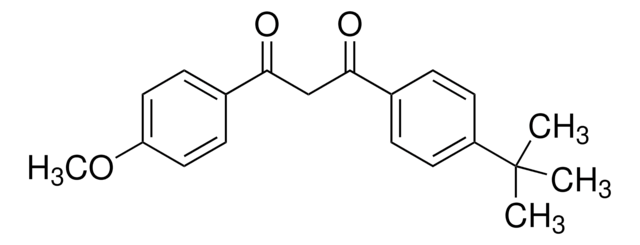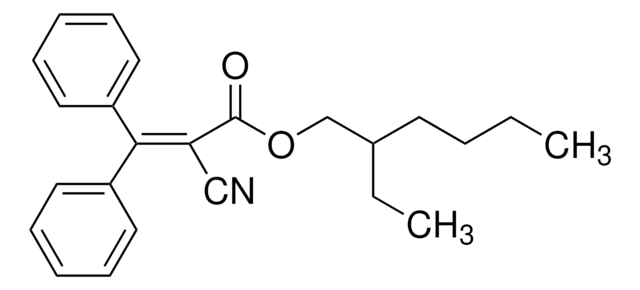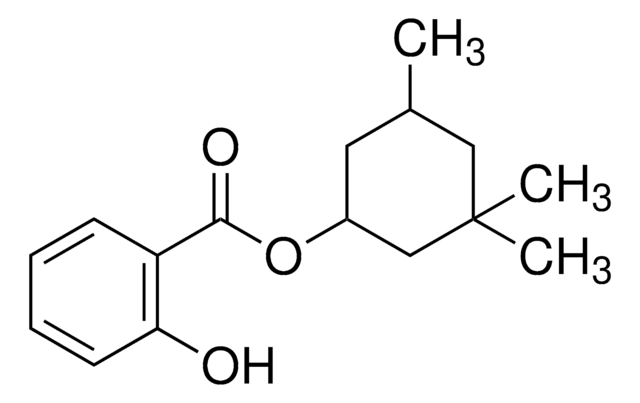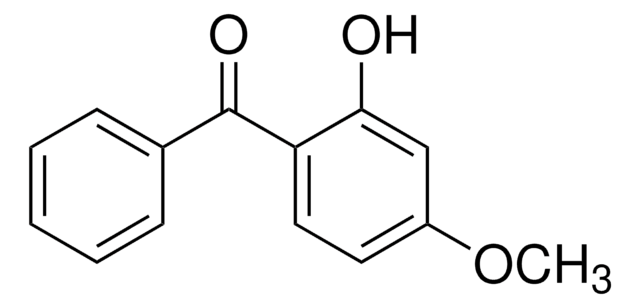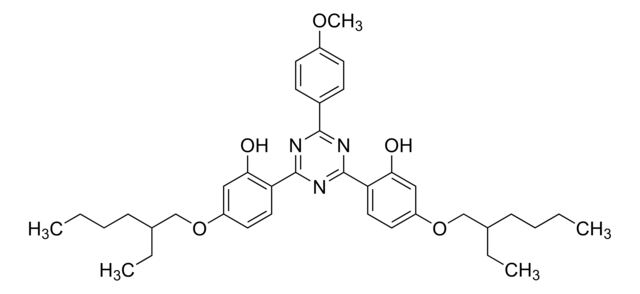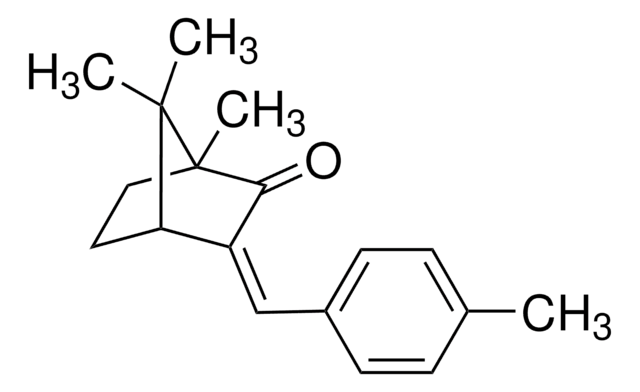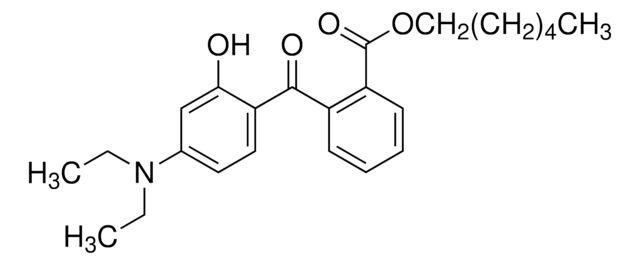16633
Avobenzone
analytical standard
Synonym(s):
1-(4-Methoxyphenyl)-3-(4-tert-butylphenyl)-1,3-propanedione, Butyl methoxydibenzoylmethane
About This Item
Recommended Products
grade
analytical standard
Quality Level
Assay
≥99.0% (GC)
technique(s)
HPLC: suitable
gas chromatography (GC): suitable
mp
81-84 °C
application(s)
cleaning products
cosmetics
environmental
food and beverages
personal care
format
neat
SMILES string
COc1ccc(cc1)C(=O)CC(=O)c2ccc(cc2)C(C)(C)C
InChI
1S/C20H22O3/c1-20(2,3)16-9-5-14(6-10-16)18(21)13-19(22)15-7-11-17(23-4)12-8-15/h5-12H,13H2,1-4H3
InChI key
XNEFYCZVKIDDMS-UHFFFAOYSA-N
Looking for similar products? Visit Product Comparison Guide
General description
Application
- Sunscreen formulations using reversed-phase high-performance liquid chromatography with diode array detection (RP-HPLC-DAD).
- Freshwater, saline water samples, rat plasma and skin layers using liquid chromatography-positive electrospray ionization-tandem mass spectrometry (LC-ESI-MS/MS) in multiple reaction monitoring mode (MRM).
Avobenzone may be used to study the photophysical characteristics, photosensitizing activity of a blocked diketo form derived from 4-tert-butyl-4′-methoxydibenzoylmethane (BM-DBM).
Hazard Statements
Precautionary Statements
Hazard Classifications
Aquatic Chronic 4
Storage Class Code
11 - Combustible Solids
WGK
WGK 2
Personal Protective Equipment
Choose from one of the most recent versions:
Certificates of Analysis (COA)
Sorry, we don't have COAs for this product available online at this time.
If you need assistance, please contact Customer Support.
Already Own This Product?
Find documentation for the products that you have recently purchased in the Document Library.
Customers Also Viewed
Our team of scientists has experience in all areas of research including Life Science, Material Science, Chemical Synthesis, Chromatography, Analytical and many others.
Contact Technical Service